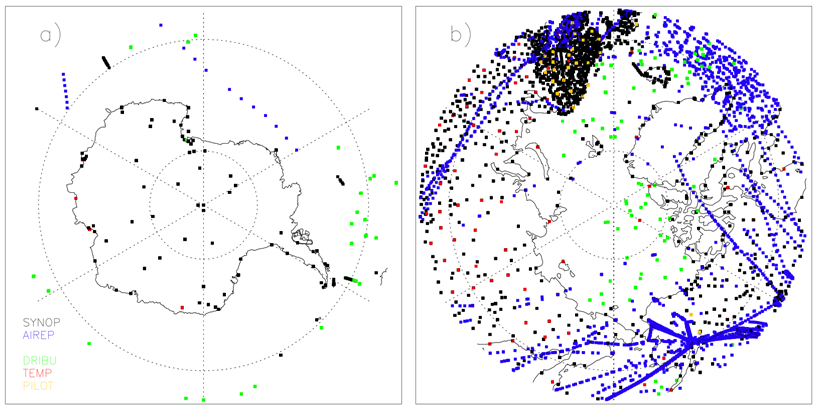By Jonathan Day
Rapid climate change in the Arctic has led many to question what impact these changes are having on weather in the mid-latitudes. Last week scientists from the Reading’s Department of Meteorology attended the International workshop on polar-lower latitude linkages in Barcelona to present their research on this exciting area of research and to decide on the next steps forward for this field.
One study that has created much discussion since its publication is a study by Jennifer Francis from Rutgers University1. This study suggests that the rapid warming of the Arctic has caused the northern hemisphere jet stream, a narrow meandering air current which modulates the weather, to become wavier. If true, this implies that mid-latitude weather systems will persist for longer meaning that extreme rain storms would cause more flooding and heat waves and droughts would last for longer.
This study however has proved rather controversial and both James Screen2, of University of Exeter, and Elizabeth Barnes3, of Colorado State University, presented results which seemed incompatible with this. James Screen showed that the variability of mid-latitude weather has actually decreased during the recent period and climate projections show this continuing into the future, which is at odds with this picture. This highlights the difficulty in attributing recent weather patterns to climate change.
One thing that was not controversial at the meeting was the need for increased observations and forecast improvements in the polar regions. The prohibitive expense and logistical difficulties means that large holes exist in the observational coverage at the poles (see Figure 1). However reduced Arctic sea ice has opened the Arctic up to commercial shipping and natural resource exploitation and resultant exposure of humans to meteorological hazards there. This combined with the realisation that the weather and climate of the polar regions affects us further south4 provides a strong motivation to improve this situation over the coming years.
Figure 1. Locations of in-situ observations included in the ECMWF forecast on 1 January 2014 (courtesy of Peter Bauer)
- Francis, J. A. & Vavrus, S. J. Evidence linking Arctic amplification to extreme weather in mid-latitudes. Geophysical Research Letters 39, (2012).
- Screen, J. A. Arctic amplification decreases temperature variance in northern mid- to high-latitudes. Nature Climate Change 4, 577–582 (2014).
- Barnes, E. A. Revisiting the evidence linking Arctic amplification to extreme weather in midlatitudes. Geophysical Research Letters n/a–n/a (2013). doi:10.1002/grl.50880
- Jung, T., Kasper, M. A., Semmler, T. & Serrar, S. Arctic influence on subseasonal midlatitude prediction. Geophysical Research Letters n/a–n/a (2014). doi:10.1002/2014GL059961

